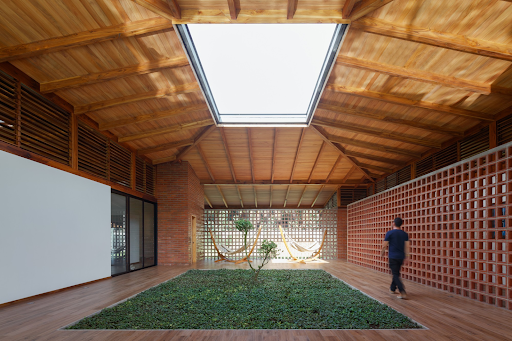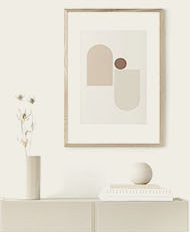
How to Use Passive Design Strategies to Achieve Thermal Comfort In Your Home?
Picture this: a home where you feel cosy in the winter without cranking up the heater, and comfortably cool in the scorching summer without relying on your air conditioner day and night. Achieving such thermal comfort might seem like a lofty dream, but it's entirely attainable through the magic of passive design strategies.
What are Passive Design Strategies?
Passive design strategies are ingenious techniques employed in building and architectural design to create spaces that naturally maintain thermal comfort without excessive reliance on mechanical heating or cooling systems. These strategies harness the inherent characteristics of a building's location, orientation, materials, and surrounding environment to maximise energy efficiency.
By optimising factors such as sunlight, natural ventilation, insulation, and thermal mass, passive design strategies work harmoniously to keep indoor spaces comfortable throughout the year. In essence, they enable us to live in homes that effortlessly adapt to the seasons, reducing energy consumption and environmental impact while ensuring a pleasant and sustainable living experience.
Top 5 Passive Design Strategies to Make a Home Feel Comfortable
Passive design strategies are a gift to homeowners seeking comfort and sustainability. By embracing these techniques, you can transform your home into a haven that naturally maintains pleasant indoor temperatures throughout the year. Mentioned below are the most popular and widely used passive design ideas you can use for your home.
-
Optimal Orientation
In colder climates, orienting the majority of windows southward allows the low-angled winter sun to penetrate deep into living spaces, naturally warming them. Conversely, in hot climates, minimising east and west-facing windows can prevent overheating from the intense morning and afternoon sun.
-
Strategic Shading
Consider installing adjustable external blinds, pergolas with moveable louvres, or perforated screens to regulate your building’s sunlight catchment. These can be tilted or retracted to precisely control the amount of sunlight entering your home, preventing overheating on sweltering summer days while allowing warmth and light in during the winter.
-
Effective Insulation
High-quality insulation not only traps warmth in winter but also keeps excessive heat out in summer. Investing in insulation materials with high R-values ensures your home remains thermally stable, reducing the need for mechanical heating or cooling. Combine this with well-sealed doors and windows, and your home becomes a thermal fortress, keeping you comfortable year-round.
-
Thermal Mass
Thermal mass materials act as thermal batteries, absorbing heat during the day and releasing it slowly at night, maintaining a consistent indoor temperature. Consider a tiled concrete floor in your living room, which not only looks stylish but also helps stabilise temperatures.
Read: The Relevance Of Vernacular Materials In Contemporary Construction
-
Natural Ventilation
Designing your space to facilitate cross-ventilation by placing windows on opposite sides allows cool breezes to flow through, dispelling stuffiness and promoting airflow. Consider utilising operable skylights or clerestory windows to create stack ventilation, where warm air rises and exits through higher openings, drawing in fresh air from below.
How are Passive Design Strategies Beneficial?
In a world increasingly focused on energy efficiency and environmental sustainability, passive design strategies have emerged as a shining beacon of innovation. Let’s have a look at the 5 key benefits of passive design strategies in architecture.
-
Energy Efficiency
By harnessing natural elements like sunlight, wind, and thermal mass, passive design strategies enable homes and buildings to maintain comfortable temperatures without relying heavily on heating or cooling systems. This helps in reducing the cost of bills while also saving energy.
-
Enhanced Thermal Comfort
Passive design strategies excel in creating spaces that are naturally comfortable throughout the year. They take into account factors like building orientation, insulation, and thermal mass to ensure that indoor temperatures remain stable and pleasant, regardless of the season.
-
Healthier Indoor Air Quality
Proper ventilation is a cornerstone of passive design. By incorporating natural ventilation methods, such as strategically placed windows and vents, these strategies ensure a steady flow of fresh air. This not only reduces the risk of indoor air pollutants but also contributes to improved respiratory health and overall well-being.
-
Cost Savings
Passive design strategies may require an initial investment, but they pay dividends in the long run. Lower energy bills, reduced maintenance costs, and potential tax incentives make them a financially savvy choice for homeowners and building developers alike. Over time, the return on investment becomes increasingly evident.
-
Sustainability
The sustainability aspect of passive design strategies cannot be overstated. By relying on natural resources rather than energy-intensive systems, passive design reduces the strain on the environment. It lessens greenhouse gas emissions and helps conserve precious resources, aligning perfectly with global efforts to promote sustainable living.
Discover Breeze Blocks on Archizy- A Passive Design Element
Archizy is a one-stop solution for architects and interior designers to explore everything from surface finishes to furniture and decor. Breeze blocks listed on Archizy are a unique building material product that serves as a double skin for buildings and helps in achieving indoor thermal comfort. Let’s have a look at some of the most versatile breeze blocks on Archizy that can serve as an excellent passive design element.
Visit www.archizy.com to discover the best furniture and decor products for your home.














